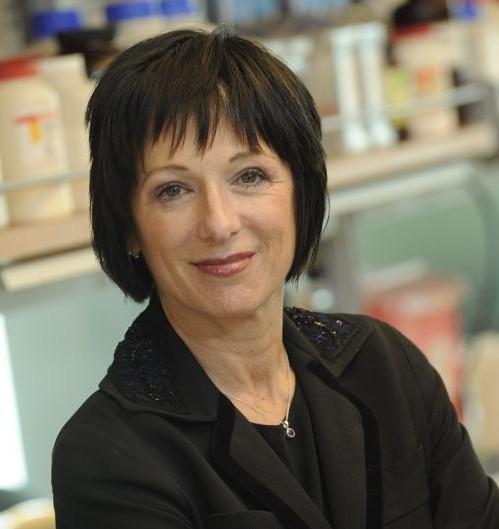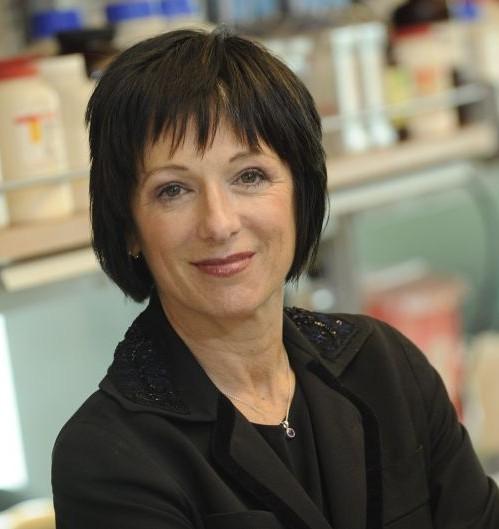
Lake Nona, Fl., Feb. 17, 2016 – A new research study has revealed an important relationship between proteins secreted by the heart and obesity, glucose intolerance, and insulin resistance. The findings, published today in Obesity, offer a new approach to treating metabolic disorders, including type 2 diabetes, by targeting the pathway that controls the proteins' concentration in the blood.
"Our results illustrate how the regulation of cardiac natriuretic peptides (NPs) is altered in obesity, insulin resistance, and type 2 diabetes," said study co-author Sheila Collins, Ph.D., professor in the Diabetes and Obesity Research Center at Sanford Burnham Prebys Medical Discovery Institute (SBP). "When we examined fat (adipose) tissue from patients with these metabolic conditions, we found higher levels of the receptor that clears NPs from circulation, suggesting that if we can boost NP levels and/or reduce the level of its clearance receptor, we may be able to correct some of these conditions."
The double life of NP hormones
NPs are hormones produced by the heart that are primarily known for their ability to influence blood pressure. When the heart senses elevated pressure, it releases NPs, which go to the kidneys, triggering the body to release salt and water from the bloodstream to lower blood pressure. NPs prompt the response to blood pressure by signaling through an active receptor (NPRA), and are removed from the blood by a clearance receptor (NPRC). Both receptors contribute to the level of NP activity.
Almost two decades ago, NP receptors were unexpectedly found in human adipose tissue, suggesting that NP levels may play an additional role in metabolism and obesity. Indeed, subsequent studies have shown that circulating NP levels are lower in obese individuals and those with metabolic risk factors, including high glucose levels. More recently, research has shown that obese individuals have higher levels of the clearance receptor in adipose tissue.
Study findings
"We examined levels of NPRA and NPRC in adipose and skeletal tissue in individuals with a range of body mass index (BMI) values and insulin sensitivity," said study co-author Richard Pratley, M.D., director of the Florida Hospital Diabetes Institute and senior scientist at the Florida Hospital-SBP Translational Research Institute for Metabolism and Diabetes (TRI). "We found that higher BMI values are associated with elevated levels of the clearance receptor in adipose tissue.
"We also looked at NP receptor levels in patients with type 2 diabetes after taking pioglitazone, a drug used to improve insulin sensitivity and control blood sugar in patients with type 2 diabetes. Interestingly, we found that these patients had a significant reduction in the level of the clearance receptor in adipose tissue, further reinforcing the link between NPs, insulin resistance, and obesity.
Next steps
"Overall, our results suggest that drugs that target the pathway(s) that lead to increased NP levels may be a new way to treat metabolic disorders, including obesity, insulin resistance, and potentially type 2 diabetes.
"Since we already have access to FDA-approved drugs to control blood sugar, and we know that these drugs impact NP levels, we may be able to redesign these drugs to specifically target other metabolic conditions including obesity," said Collins.
"This project is a great example of taking research from bench to beside, and highlights the strength of the partnership between SBP and TRI–a partnership that accelerates the delivery of lab discoveries to the clinic," added Pratley.
###
About Sanford Burnham Prebys Medical Discovery Institute
Sanford Burnham Prebys Medical Discovery Institute (SBP) is an independent nonprofit research organization that blends cutting-edge fundamental research with robust drug discovery to address unmet clinical needs in the areas of cancer, neuroscience, immunity, and metabolic disorders. The Institute invests in talent, technology, and partnerships to accelerate the translation of laboratory discoveries that will have the greatest impact on patients. Recognized for its world-class NCI-designated Cancer Center and the Conrad Prebys Center for Chemical Genomics, SBP employs more than 1,100 scientists and staff in San Diego (La Jolla), Calif., and Orlando (Lake Nona), Fla. For more information, visit us at SBPdiscovery.org. The Institute can also be found on Facebook at http://www.facebook.com/SBPdiscovery and on Twitter @SBPdiscovery.
About Florida Hospital
Florida Hospital is a faith based, full service, academic and teaching healthcare system focused on providing whole person care. It is one of the largest not-for-profit hospitals in the country caring for more than a million patient visits per year, and is part of the Adventist Health System of hospitals. The more than 2,000-bed system is comprised of eight hospitals locations throughout Central Florida. Florida Hospital is home to the largest diabetes and endocrine practice in Central Florida, as well as the Translational Research Institute for Metabolism and Diabetes. Florida Hospital has received the Joint Commission "Gold Seal" as well as the State of Florida "Governor's Sterling Award" for quality twice(1994 and 2010). For more information, please visit http://www.floridahospital.com.
About the TRI
The Florida Hospital-Sanford-Burnham Translational Research Institute for Metabolism and Diabetes (TRI) is the product of an innovative affiliation between Florida Hospital and Sanford-Burnham Medical Research Institute. By linking one of the largest not-for-profit hospitals in the country with a nationally renowned basic science leader, the TRI bridges the gap between the research bench and the patient's bedside. The mission of the TRI is to extend and improve the quality of lives through the translation of fundamental scientific discoveries to the diagnosis and treatment of human disease. For additional information, please visit http://www.TRI-MD.org or http://www.floridahospital.com.
Media Contact
Susan Gammon
[email protected]
858-795-5012
@sbpdiscovery
http://www.sbpdiscovery.org/





